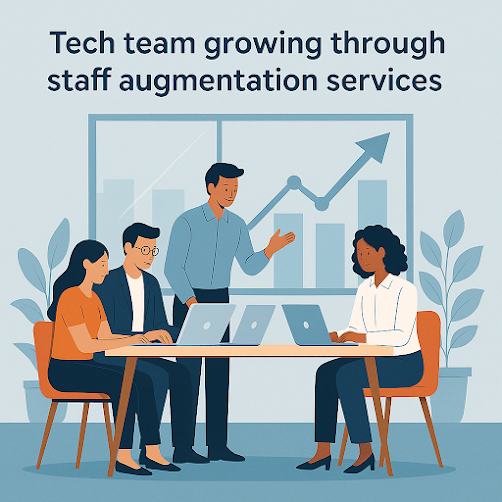6 Key Steps to Implement AI Automation in Your Business
How to Implement AI Automation in Your Business
AI automation is no longer a futuristic concept—it’s a necessity in 2025. As companies strive to cut operational costs, improve accuracy, and speed up delivery, AI automation has proven to be a transformative force across industries.
But while the benefits are clear, the path to successful implementation can be complex. From selecting the right tools to ensuring secure and scalable deployments, businesses need a structured approach.
In this blog, we outline the six essential steps to implement AI automation effectively in your business and gain a competitive edge.
Step 1: Planning for Automation
Before jumping into technology, it’s crucial to define clear automation goals:
-
What processes do you want to automate?
-
What outcomes are you expecting?
-
How will success be measured?
Create a roadmap that aligns AI initiatives with business objectives, considering timelines, budget, and stakeholder involvement.
Key tip: Start with high-impact, repetitive tasks that are rule-driven but time-consuming.
Step 2: Choosing the Right Tools & Platforms
Once the scope is defined, select the best-fit tools that support your automation needs. Depending on your requirements, you may consider:
-
RPA tools (e.g., UiPath, Automation Anywhere)
-
ML platforms (e.g., TensorFlow, AWS SageMaker)
-
AI chatbot frameworks (e.g., Dialogflow, Rasa)
Factors to consider include scalability, integration capabilities, support, and ecosystem maturity.
Pro tip: Choose platforms that provide easy API integration and workflow visualization.
Step 3: Data & Model Integration
AI systems thrive on data. Ensure you have access to clean, labeled, and diverse datasets. This step includes:
-
Data collection & preprocessing
-
Model selection (rule-based vs. ML-based)
-
Training & validation
Work with AI specialists to build or deploy pre-trained models, depending on the complexity of your use case.
Example: In customer support automation, train chatbots using past ticket data and FAQs.
Step 4: Security and Compliance Considerations
AI automation systems often handle sensitive data. As a result, it’s essential to address:
-
Data privacy laws (GDPR, CCPA, HIPAA)
-
Access controls & role-based permissions
-
Encryption & audit trails
Partnering with experienced AI consultants ensures your solution is compliant with global standards.
Risk to avoid: Ignoring compliance early on can lead to costly fines or data breaches.
Step 5: Seamless Deployment & Scalability
Begin with a pilot implementation in a contained environment. Test the solution under real conditions before enterprise-wide rollout.
Focus areas during deployment:
-
Change management & team training
-
Integration with existing systems
-
Monitoring performance & feedback loops
Once validated, scale gradually across other departments or processes.
Pro insight: Use cloud infrastructure for cost-effective scaling and real-time access.
Step 6: Post-Deployment Optimization
AI systems improve with continuous learning. After deployment:
-
Monitor KPIs and automation ROI
-
Retrain models with new data
-
Gather user feedback for iterative improvements
Regular updates and system tuning ensure long-term performance and adaptability.
Suggested KPIs: Time saved, cost reduction, error rate, and user adoption metrics.
Learn how AI is saving 40% operational time: How AI Automation Saves Time in 2025
Explore how AI strategy starts with consulting at Codepaper Technologies
At Codepaper Technologies, we specialize in AI consulting services that empower businesses to unlock the full potential of artificial intelligence. Whether you’re a startup or an enterprise, our AI solutions are tailored to drive innovation, efficiency, and scalable growth through intelligent automation and custom strategy. Explore our AI Automation Services
Build your roadmap with guidance from HBR: A Guide to Building AI Automation into Your Operations
Need a roadmap? Our AI consultants at Codepaper help you automate smarter and faster.
From assessment to deployment and beyond, we help you navigate every step of the AI automation journey.




Comments
Post a Comment